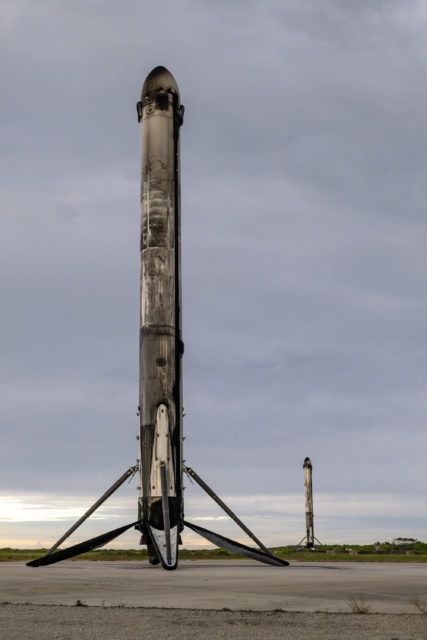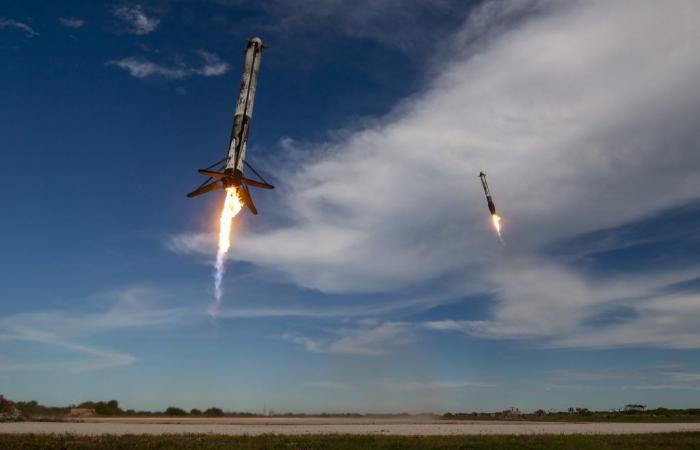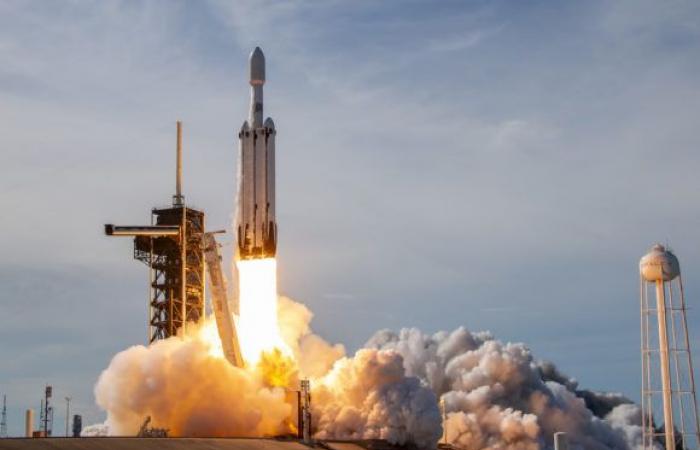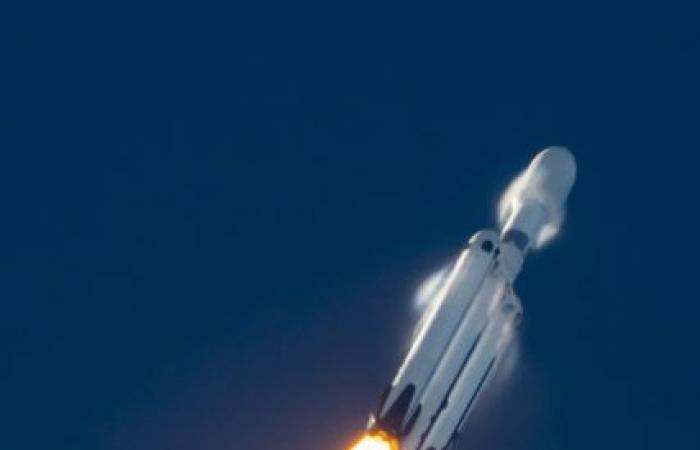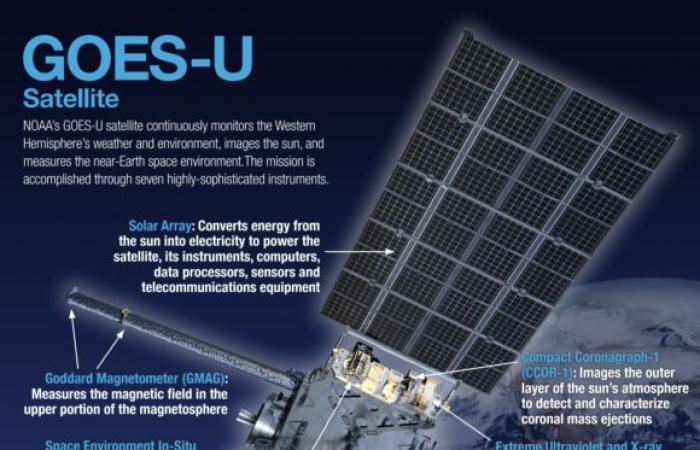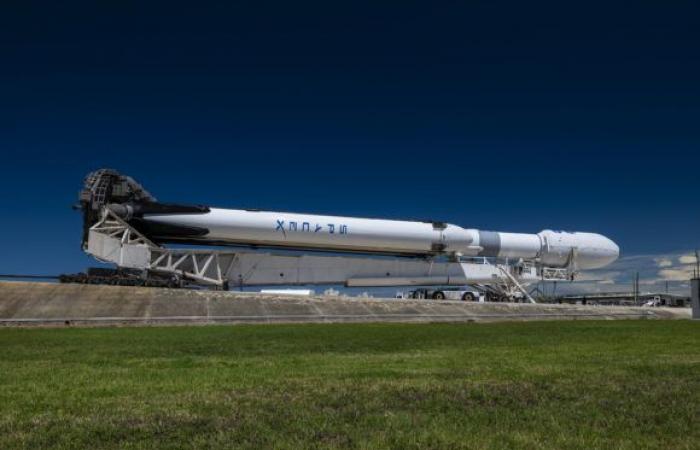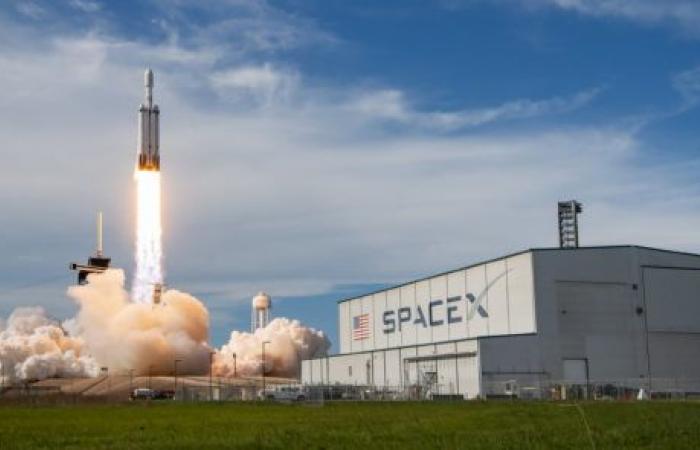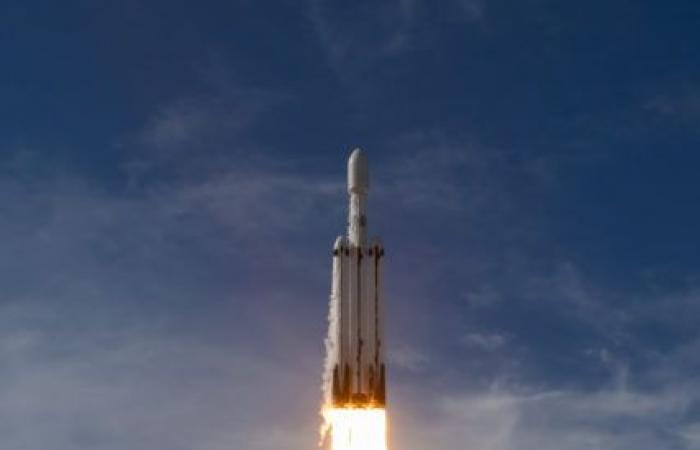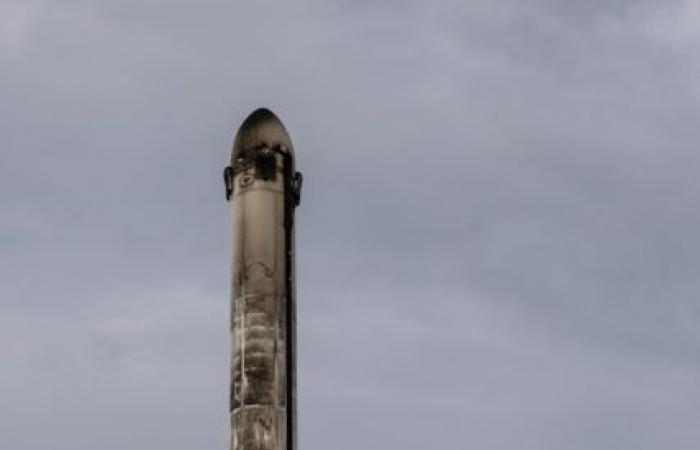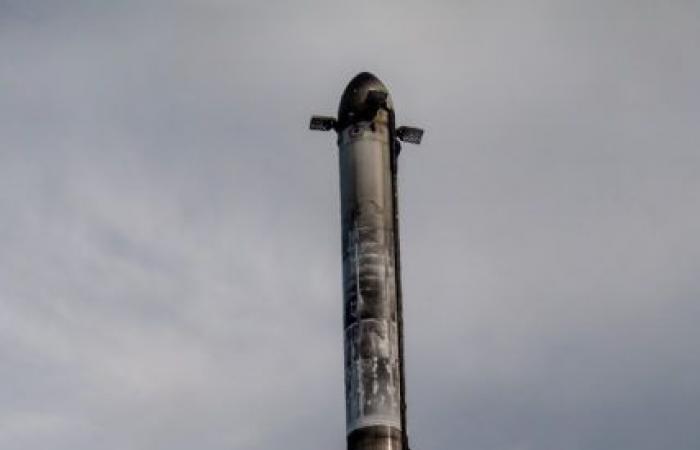It seems like it was yesterday that we first saw the launch of a Tesla Roadster into escape orbit, but it took six years for the world’s second most powerful rocket in service after NASA’s SLS to take off for the tenth time. On June 25, 2024 at 21:26 UTC, SpaceX’s tenth Falcon Heavy took off from ramp 39A of the Kennedy Space Center (KSC) in Florida. The mission was also the ninth Falcon Heavy Block 5 and the first of this year. The fact that this mission is also SpaceX’s 65th orbital launch in 2024 reveals the minor role that the Falcon Heavy plays in the schedule of Elon Musk’s company, dominated by the Falcon 9. And the continuous improvements in the Falcon 9 have caused the Falcon Heavy to be reserved for very specific missions. In this case, the Falcon Heavy placed NASA’s GOES-U weather satellite into geostationary transfer orbit (16,000 x 35,240 kilometers and 4.4º inclination) after three firings of the second stage about 4.5 hours after the launch. takeoff.
The tenth Falcon Heavy used the B1087 core stage which, as is common in launches of this launcher, was discarded in the ocean. Side stages B1072 and B1086 were also flying for the first time and landed on solid ground in zones LZ-1 and LZ-2. With these landings, SpaceX has successfully carried out 250 first stage landings followed by a total of 324 successful landings. It was also the 41st successful landing in the LZ-1 area and the 11th in LZ-2, in addition to being the 85th launch from ramp 39A and the 331st successful launch of the company in a row. Figures as impressive as they are overwhelming. Let us remember that, meanwhile, the rest of the world has carried out exactly zero launches of orbital rockets with reused stages.


GOES-U is the fourth and final satellite in the latest generation of GOES weather satellites (Geostationary Operational Environmental Satellites), called GOES-R. It has been built by Lockheed Martin for NOAA (National Oceanic and Atmospheric Administration) using the A2100A platform. It has a mass of 5192 kg (2857 dry) and a useful life of about 15 years. Once in orbit, GOES-U will be called GOES-19 and will replace GOES-16 in the “GOES East” position (longitude 75º west), which, together with GOES-18 or GOES West (longitude 137º west), will cover the entire hemisphere of North and South America. The GOES program is a joint effort between NASA and NOAA. Basically, NASA is in charge of managing the construction and launch of the satellites, while NOAA operates them.


The main instrument is the ABI camera (Advanced Baseline Imager) built by L3Harris and equipped with 16 channels in the visible and near infrared to obtain images of the entire disk of the Earth. Other instruments are the SEISS (Space Environment In-Situ Suite), which includes five sensors to detect energetic electrons and protons from the solar wind, the EXIS (Space Environment In-Situ Suite), to measure the Sun’s emission in X-rays and in the extreme ultraviolet region, SUVI (Solar Ultraviolet Imager), an ultraviolet camera to observe the Sun, the MAG magnetometer and the GLM lightning detector (Geostationary Lightning Mapper), the latter an instrument built by Lockheed Martin. It is also the first satellite in the GOES-U series to carry a coronagraph, the CCOR-1 (Compact Coronagraph 1) to study coronal mass ejections (CMEs) from the Sun, an instrument run by the NRL (Naval Research Laboratory) that will replace the observations of the veteran SOHO. It is the first GOES-R type satellite launched by a Falcon Heavy, since since 2016 the previous three had been put into orbit by Atlas V 541 rockets (GOES-R, GOES-S and GOES-T).
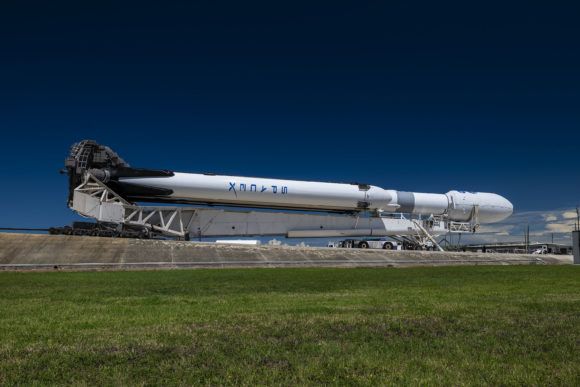
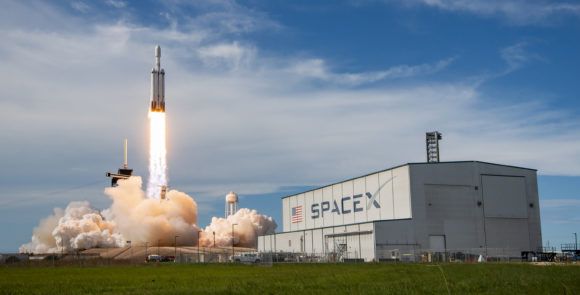
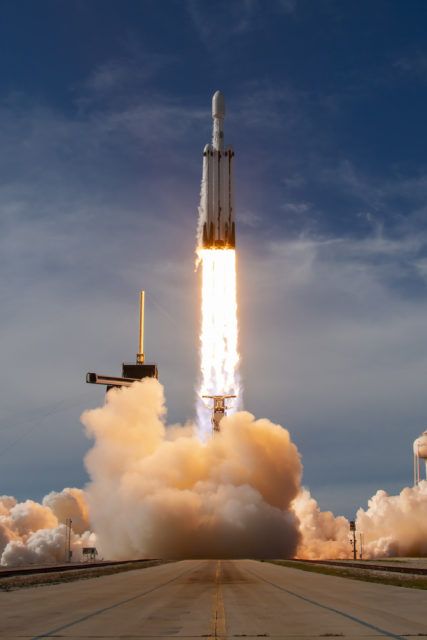
Using a rocket as powerful as Falcon Heavy will allow GOES-U to save fuel for its move to geostationary orbit (GEO) and thus extend its useful life to, hopefully, twenty years. The Atlas V was capable of placing GOES-R into a transfer orbit that required a Delta-V of at least 987 m/s to reach GEO, while the Falcon Heavy has placed GOES-U into an orbit that requires a Delta-V of 566 m/s to reach GEO. GOES-U will perform five firings of its LEROS-1C engine to raise its apogee to GEO, the last of which will occur around July 8. The launch cost was approximately $153 million. The GOES-R series will be replaced in the future by the GeoXO satellites (Geostationary Extended Observations), whose prime contractor will also be Lockheed Martin. The first of the three planned GeoXOs is due to launch in 2032. This was NASA’s second Falcon Heavy launch with a payload after the Psyche probe. The next will be the all-important Europa Clipper mission, which is due to take off next October.
